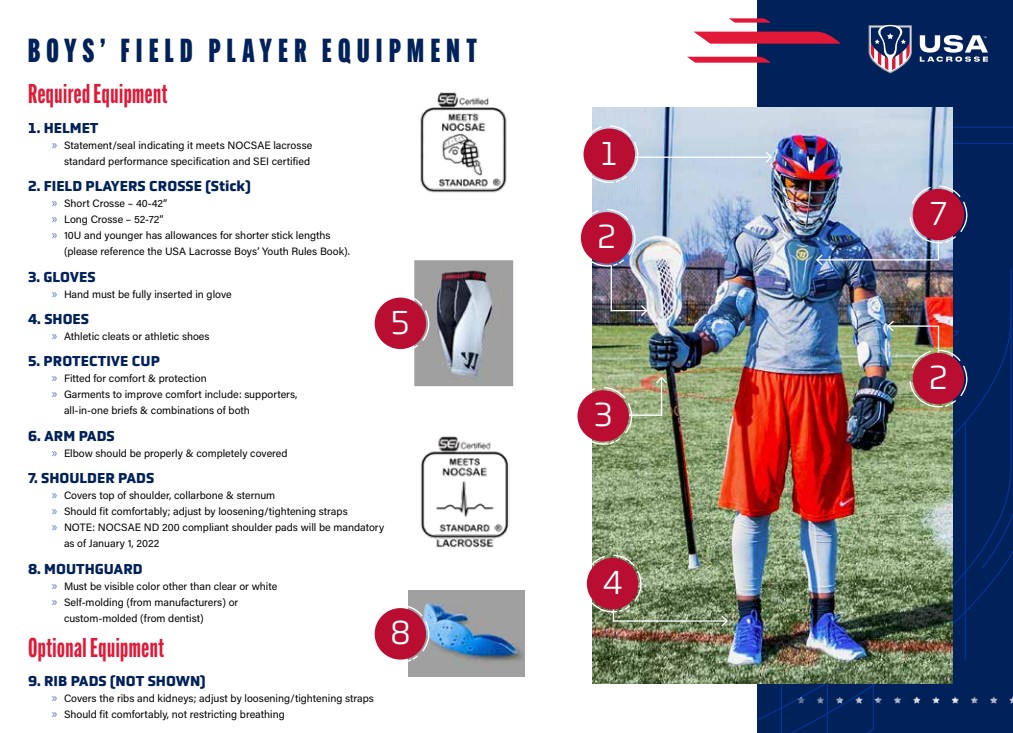Lacrosse 101 for Parents: A Beginner's Guide
Welcome to the exciting world of lacrosse! If you're considering lacrosse for your child, this guide will help you understand the basics of the sport, what gear your child will need, and how to get started with confidence. Lacrosse is not only fun and fast-paced but also offers incredible benefits in terms of skill development, teamwork, and physical fitness.
What is Lacrosse?
Lacrosse is a team sport that combines elements of strategy, skill, and athleticism. Known as "the fastest game on two feet," players use a stick (called a crosse) to catch, cradle, and pass a small rubber ball in an effort to score in the opposing team’s goal. The game is played on a grass or turf field and is full of excitement and action, making it a favorite for both players and fans.
Why Should Your Child Play Lacrosse?
Lacrosse offers numerous benefits for children:
- Physical Fitness: It’s a great way to improve speed, agility, coordination, and strength.
- Teamwork & Discipline: Players learn how to work together toward a common goal and develop discipline on and off the field.
- Mental Skills: Lacrosse requires quick decision-making, strategic thinking, and focus.
- Social Connections: It’s an excellent way for kids to make new friends and be part of a supportive team environment.
Essential Lacrosse Gear
Your child will need some basic gear to get started. Here’s a breakdown of the essential equipment:
- Stick (Crosse): The main tool in the game. It consists of a shaft and a netted head. The stick is used for catching, cradling, and passing the ball. Make sure it’s the right size for your child based on their age and height.
- Helmet: Safety first! A helmet with a face mask protects your child’s head from injury during play.
- Gloves: Lacrosse gloves offer protection for your child’s hands while providing grip on the stick.
- Shoulder Pads: These provide protection for the upper body during physical play and checking.
- Elbow Pads: Elbow pads protect the arms during shooting, passing, and contact.
- Cleats: Proper footwear is essential, as lacrosse is played on grass or turf fields. Cleats provide the traction your child needs to move quickly.
- Mouthguard: Some leagues require mouthguards to protect your child’s teeth and gums during the game.
Basic Skills Your Child Will Learn
Lacrosse is skillful and challenging, but children can quickly pick up the basic techniques. Some key skills include:
- Cradling: The technique of holding the ball in the stick while running and moving.
- Throwing & Catching: Basic skills for passing the ball to teammates and advancing the play.
- Shooting: Aiming for the goal to score, which requires precision and power.
- Ground Balls: Teaching your child how to scoop up the ball from the ground during play.
- Defensive Skills: Blocking passes and checking opponents in a safe and controlled way.
Key Rules of Lacrosse
While it may look fast and chaotic, lacrosse has a set of straightforward rules:
- Team Setup:
- 3rd Grade through 6th Grade, the team consists of 10 players: 3 attack, 3 midfield, 3 defense, and 1 goalie.
- 1st and Second Grade play a small field game consisting of 8 players: 2 attack, 3 midfield, 2 defense, and 1 goalie.
- Objective: The goal is to score by shooting the ball into the opponent’s net.
- Passing and Catching: Players use their sticks to pass, catch, and scoop the ball.
- Contact: Body checks and stick checks are part of the game, but they must follow specific safety guidelines to ensure fair play.
Tips for Parents
- Encourage Practice: Lacrosse requires skill development. Encourage your child to practice their stick skills at home, such as by using a wall to work on throwing and catching.
- Stay Involved: Attend games and practices, and learn alongside your child. Your involvement shows support and helps them stay motivated.
- Focus on Fun: Like any sport, lacrosse should be fun! It’s okay if they don’t master everything right away—help them enjoy the learning process.
Ready to Get Started?
Lacrosse is a sport that will keep your child engaged, active, and learning new skills while having a blast. With the right gear and a positive attitude, your child can become a part of this dynamic, growing sport. So, whether they’re eager to play or you’re just getting started with learning about it, lacrosse is sure to be a rewarding experience for everyone involved.
Let’s get them out on the field and see what they can do!

Basic Gameplay Terms
- Faceoff: How the game starts and restarts after goals—two players compete for possession at midfield.
- Ground Ball: When the ball is loose on the field, players scramble to pick it up. Winning ground balls is key to maintaining possession.
- Cradle: The technique players use to keep the ball in their stick while running.
- Clear: When the defensive team moves the ball from their end of the field to the offensive side.
- Ride: When the offensive team pressures the defense to stop them from clearing the ball.
- Fast Break: A quick transition to offense, often leading to scoring opportunities.
Player Positions
- Attack: Players focused on scoring goals stay on the offensive side of the field.
- Midfield (Middie): Players who play offense and defense and cover the entire field.
- Defense: Players are responsible for protecting the goal and preventing the opposing team from scoring.
- Goalie: The player who defends the goal and stops shots.
Field & Equipment Terms
- Crease: The circular area around the goal that only the goalie and their teammates can enter (on defense).
- Stick: The primary piece of equipment; consists of the head (with the pocket) and the shaft.
- Pocket: The netted part of the stick head that holds the ball.
- Helmet, Pads, & Cleats: Key protective gear; ensure proper fit and safety.
Scoring & Offense Terms
- Assist: A pass leading directly to a goal.
- Goal: When a player scores a goal.
- Dodging: An offensive move to get past a defender. Types include face dodge, split dodge (quick change of direction), and roll dodge (spinning around the defender).
- Feeding: Passing the ball to a teammate in position to score.
Defense Terms
- Slide: When a defender leaves their assigned opponent to help guard another attacker.
- Stick Check: Using the stick to dislodge the ball from an opponent’s stick. Types include poke check (jabbing at the stick) and lift check (lifting the opponent’s stick).
- Man-to-Man Defense: A strategy where each defender guards a specific opponent.
- Zone Defense: Defenders cover specific areas of the field instead of individual players.
Rules & Penalties
- Offsides: A team violation for having too many players on one side of the field.
- Slash: A penalty for striking an opponent with the stick in an uncontrolled manner.
- Illegal Body Check: A hit delivered to an illegal area (e.g., head or back) or in an unsafe manner.
- Man-Up / Man-Down: Man-up is when your team has an extra player due to an opponent’s penalty; man-down is the opposite.
Game Flow Terms
- Substitution Box: The area where players substitute in and out during the game. Substitutions happen "on the fly" (while play is ongoing).
- Turnover: Losing possession of the ball to the opposing team.
- Transition: Moving the ball quickly from defense to offense.

